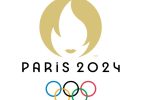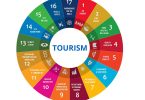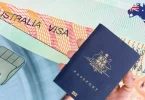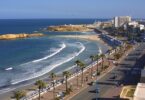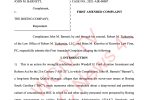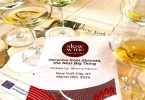In many ways, a story can always be written and at times, be told. If I have to start mine, I’d like begin in the region of Bordeaux.
Now, this is a story about passion, patience and tradition. Like stories of this nature, there are mêlées involved, and women, and men of surprising talent; as well as body parts, like the nose and palate are put to the test.
In most stories of this nature, the landscape will have castles, vast stretches of land for the grapes to grow, undulating hills on the east and serpentine rivers. If you were to locate the southwest of France on the map, you would probably think that in this region close to the Atlantic Ocean, it could be a perfect setting for a fairy tale. After all Bordeaux is long known as “La Belle Endormie” or The Sleeping Beauty.
Once upon a time, along came the modern prince, Bordeaux’s mayor Alain Juppé and finally freed La Belle Bordeaux from the spell. The former French prime minister draped his cape of leadership throughout the city and Bordeaux re-emerged with vigor from its languishing days. Not to mention its revitalized UNESCO-listed old town, seamless hi-tech public transport system and a lively university hub that seemed to keep this maiden from sleeping again or conceivably never.
“Take Versailles, add Antwerp, and you have Bordeaux,” the French poet and novelist Victor Hugo once put it. While it’s hard to keep a still gaze on its many pediments, cornices and Roman inspired verandas; on closer inspection, here is a region whose best kept secrets are served in a bottle.
The idea to visit this wine region of France first came to me in midflight while traveling from Malaysia’s capital, Kuala Lumpur to Paris. Of course, there’s the promise of a beautiful spring waiting at the banks of the Garonne River. But after some festive sips of champagne and wine on Qatar Airways during my 14 hour flight (with a layover in Doha), I felt the timing couldn’t be better.
Eager to learn more about Bordeaux’s secrets, I seamlessly connected and hopped on a train in Charles de Gaulle Airport via TGV Atlantique service. As codeshare partners, my Qatar Airways ticket became my train pass and was punched to my next destination. In a streak of silver and blue, we raced towards the Atlantic, covering 310 miles in a quick three hour rail journey while imagining a life in the fabled wine chateaus. Wouldn’t it be grand to casually drop lines like “I’m staying at Mouton” or “Can I meet you later at Lafite?” or “I’d better head back to Margaux before noon.” To be invited and spend a week at one of the great chateaus is surely a reason in itself to visit Bordeaux.
While most chateaus and country estates like to keep themselves private, the Bordelais are pragmatic by nature have successfully converted empty spaces and vacant barns into profitable guests’ receptions along with tasting rooms, catering halls and even small museums with souvenir shops. Of course wine tasting doesn’t come, without a brief brush of history. So how did Bordeaux become a legendary French wine region I asked?
The wine cultivation probably began after 43 AD, when the Romans established the first vineyards for its soldiers or so I was told. But the highlight of Bordeaux wine came after the union of Eleanor of Aquitaine and Henry Plantagenet, ruler of Normandy and Loire Valley. When Henry Plantagenet ascended to the English throne as King Henry II, it paved the way for trade and the wines of Bordeaux to became known first to the English market and eventually to the world.
Remembering my 2007 Chateau Cantenac-Brown, Grand Cru Classe, Margaux that I drank on my Qatar Airways flight, it became clear to me why some labels of Bordeaux wines carry English names like Barton, Palmer, Lynch and certainly Brown! Wines do speak for themselves I said loudly to myself before the lecturer ushered us to move along to the next chateau.
Clearly, if this was Fetes des Fleurs which is held in springtime; or Ban des Vendanges (harvest) in the fall, or perhaps Vinexpo, the big wine trade show that runs every two years, there probably would be, no room left for me to put my wine glass down. I’ve heard for years that while some private and corporate jets are double-parked at the Bordeaux airport, chartered helicopters hover from one vineyard to another, transporting distinguished visitors. Much to my surprise, over a hundred chateaus in Bordeaux are now owned by wealthy Chinese. China very recently, became the world’s fifth largest wine consumer; bagging the top consumer of red wine title last year and having swigged 1.865 billion of bottles.
I was never good at judging wine but I trust what appeals to the heart. After all, like most wines of substance, the relationship becomes emotional. I tried to recall my mental notes on the wines I tasted. If by chance some of them are not quite right, I could certainly blame the wine itself for blurring my recollection. I think Margaux is voluptuous and elegant and the exact opposite of St. Estèphe which is masculine and structured. St. Julien is refined and well balanced while Pauillac is quite powerful and classic, I should say. Though I’m confused which wines belong to the Left bank and which ones are from the Right bank? Most Bordeaux wines are red and known as claret. However, there are also dry whites and sweet whites, that when opening a bottle, you feel like you are embracing an old friend.
It started to get dark and the welcoming spring breeze added an excitement in the air and the city lights twinkled from a distance. For some reason, it was almost tempting to walk along the banks and follow the river leading toward the ocean. Which river? The Garonne or Gironde? I didn’t know, but on lucid interval I could only make out, that this is definitely the river that gave Bordeaux its fortune and fame, linking the city to the Atlantic and to the rest of the world.
Ah yes, the world! Of which I am now on the other side. Thinking about my Qatar Airways flight back home, there will be 14 hours for me to contemplate. While memories of Bordeaux linger, I will take comfort from a glass of another Margaux. Will I be tempted to try the sweet Chenin Blanc Chateau de Fesles Bonnezeaux of Loire Valley? Or give in to the South African Shiraz Bellingham 2011, The Bernard series? Perhaps New Zealand’s Pinot Noir in Villa Maria will be a welcoming change and if not, there will always be the vintage 1974 Tawny Port Kopke Colheita in Douro Valley, Portugal.
I think wine takes us through time. There is history in every bottle. When poured, you start to appreciate its story. Once tasted, only then you will understand that wine allows you to see the world in a completely different light – of wondrous flavors and varying degrees of sweetness.
The author, Jan Sevilla, is a quixotic nomadic chick from the Philippines with some difficulty of having her subject agree to her verb.



